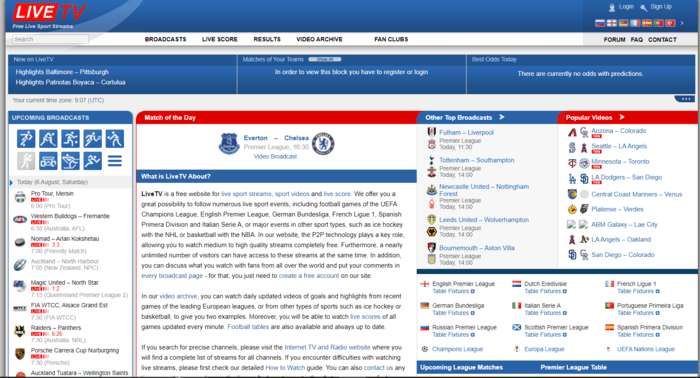Let’s talk about RSS. Obsolete piece of technology for some and a productivity tool for others, RSS is slowly reentering the conversation as it should.
No other time than now makes perfect sense for RSS to make a much needed comeback. No matter what your line of work is, RSS makes all the difference in how you process information.
RSS feed: simply explained
But what is it? RSS is a bit old school, I admit. Not many will know what Rich Site Summary or Really Simple Syndication even are (spoiler, what the abbreviation stands for).
Chances are you will know what the technology is – a means to stay up to date with blogs, news publications and other websites. Users control their subscriptions in their RSS feed reader and get new publications in chronological order.
It was groundbreaking when it first gained popularity as a way to organize one’s online reading and remains indispensable in the current digital landscape where you have plentiful platforms and publications vying for your attention.
Does this matter for your business?
Absolutely. RSS is not dead.
On the contrary, RSS has resisted obsolescence and has changed enough to give its users a much more rounded experience of the Internet. Every office should have RSS readers for their employees as it makes their job infinitely easier.
Dealing with newsletters? RSS!
Overwhelmed with Google Alerts? RSS!
Or maybe you want to find a better job in a much more orderly fashion. RSS emerges as the clear winner to get the task done without breaking a sweat.
How can your business benefit from using RSS feeds?
RSS feeds make data collection all the more streamlined. It’s the major trajectory RSS readers have been following in recent years, which began with the added support for various social media platforms regardless of media type. Anything and everything can be turned into RSS feeds, which serves research well.
In addition, RSS feed readers have been moving into productivity and collaborative territories. A big example here would be the wide integration options for Inoreader and its advanced Teams feature. Combined together, these features enable marketers to perform social media listening to a great degree.
Reach out to your current customers easier and faster
Providing better customer service stands at the heart of any successful company. Most companies recoil at the mention of a dissatisfied customer, because no one wants to deal with negative reviews and the blemish on their reputation they bring. Bad reviews are unavoidable and should be looked at as opportunities to strengthen your loyalty.
Poor customer service ranks among the top deal breakers for customers. Businesses solve problems – do not forget that. Through RSS, you can follow review sites, social media pages, hashtags and even your Twitter dashboard. It’s highly convenient for when one person is in charge of social media monitoring. Spot any new complaint (or compliment!) and take action.
All any of your customers want is to be acknowledged.
Find more prospective customers
Non-branded keywords are indispensable in locating sales opportunities. Through routing active searches whether on Twitter or through the active search feature on Inoreader, you’re able to seek out interest in the type of product or service you offer. Be proactive and reach out. These users on social media are already primed to make a purchase so all you have to do is appear as the natural, best solution.
Google Alerts are also quite handy in this regard and if you’ve added all your competitors’ social media profiles in your RSS feed reader, then you can spot dissatisfied customers in their mentions and comments – a ripe, if a little risky prospect to land a sale.
Find out what your audience is interested in
Do you know who your ideal customer is right now? Buyer personas work only insofar brands maintain their fingers on the pulse of market trends. It’s fairly easy to lose touch with what your target audience values and finds interesting.
Through comprehensive keyword research, brands monitor customer behavior and market trends – two things that go hand in hand. Knowing both at any given time guarantees your potential to generate sales leads. RSS makes it super easy to organize your discovery and proceed with deeper research into consumer psyche. Marketers identify needs, opportunities and appropriate language in order to target their campaigns better.
Follow the competitor’s campaigns and success
A readily available resource to draw inspiration from are your competitors. No company functions in a vacuum and a smart competitor knows to investigate market leaders as well as up-and-comers. Lessons can be learned from both concerning how your shared demographic reacts to novel ideas (we live in the era of market disruptors) and what they value in the tried-and-tested brands.
No business is without a digital footprint so you have all the clues right in front of you. It’s just a matter of where to look. Different platforms reveal different information. What you learn from the flurry of social media mentions (straight from the customer’s mouth) differs from coverage by the industry press or news sites (a professional prism). You need both to gain a fuller picture and RSS can merge these various sources into a single feed.
Develop better campaigns and follow the results
Competitor analysis serves as a great jump-off point for creating better marketing campaigns. RSS keeps tabs on the coverage you (and your competitors) receive online throughout a campaign – be it mentions on social media, use of branded hashtags or headlines in trade or general publications. Read over time, these entries create a benchmark for your performance.
You’ll know when you’re not hitting the target by the tell-tale silence (when your campaigns fail to reach your audience altogether) or outrage (when you get noticed but for all the wrong reasons). Either way, with a benchmark set, brands have the tools to identify weaknesses and misses in their marketing campaigns, and fine tune their targeting.








Add Comment